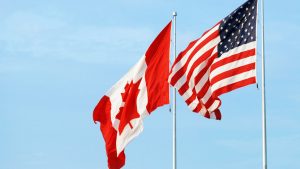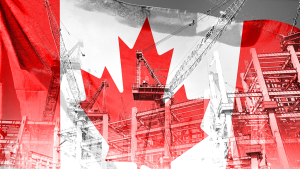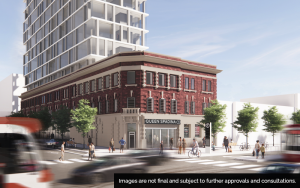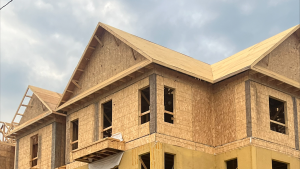There are only a certain number of economic statistics that have been gathered and published on a consistent basis for truly extended periods of time.
Thankfully, one such data set is census metropolitan area (CMA) new home starts as calculated by Canada Mortgage and Housing Corporation (CMHC) and appearing in Cansim Table 027-0049.
1961 is the first year for which figures are available, but I’ve chosen to focus on 1967 to the present (2016). The reason is simply to have the nice round figure of 50 years (or half a hundred years) to talk about.
For 13 of Canada’s largest population centers, the accompanying graphs show annual total new home starts, plus excel-generated trend lines. Also, text boxes record 50-year averages and the latest levels.
None of the trend lines are particularly ‘good fits’, but they do provide an indication of whether housing starts in a city have been moving upwards or downwards, or staying about the same over a long stretch of time.
The cities with upward trends in new home starts over the whole 50 years have been Toronto, Vancouver, Calgary and Edmonton.
Those with trend lines that have been easing off − although recent patterns may be more upbeat − have been Montreal, Winnipeg, Hamilton, London and Victoria.
Those staying on, or closer to, an even keel have been Ottawa-Gatineau, Quebec City, Kitchener and Halifax. (Gatineau used to be known as Hull and is on the Quebec side of the border with Ontario.)
For the six cities in Canada with populations of more than a million each, Toronto has recorded the strongest 50-year average of new home starts, 30,900 units. Montreal (20,200) has ranked second, followed by Vancouver (15,900), Calgary (9,600), Edmonton (8,700) and Ottawa-Gatineau (8,000).
It’s no coincidence that those six cities appear in the same order when ranked by their population counts. In 2015 (i.e., the latest year for which data is available), Toronto’s urban core plus suburbs had 6.13 million residents; Montreal, 4.06 million; Vancouver, 2.50 million; Calgary, 1.44 million; Edmonton, 1.36 million; and Ottawa-Gatineau, 1.33 million.
The latest (i.e., 2015) population statistics come from Cansim Table 051-0056. In 2015, Toronto’s population rose by 76,500 people; Calgary’s by 33,800; Montreal’s by 32,700; Edmonton’s by 31,700; Vancouver’s by 28,600; and Ottawa-Gatineau’s by 15,500. (Rising populations and family formations drive the construction of living accommodations.)
On a year-over-year percentage-change basis in 2015, Calgary and Edmonton were tied for first among the six largest Canadian urban centers, at +2.4%. Toronto came next, at +1.3%, followed by Ottawa-Gatineau and Vancouver, neck-and-neck at +1.2%, and Montreal, +0.8%.
(By the way, for all of Canada’s 33 CMAs, the fastest population growth rates in 2015 were: Kelowna, +3.2%; Calgary and Edmonton, each +2.4%; Saskatoon, +2.0%; and Regina, +1.9%.)
In 2016, however, both Calgary (-29%) and Edmonton (-41%) experienced severe declines in home starts. Economic problems were pervasive due to the depressed world price of oil. The struggles in Alberta’s energy sector caused a wave of job losses (-19,000 from December 2015 to December 2016), which shifted first-time and move-up home-buying demand to the back burner.
Nevertheless, Calgary’s large housing starts drop (-29%) in 2016 still yielded 9,200 units, which was not as far below the city’s 50-year average (9,600 units) as one might easily have expected.
In Edmonton, where there was an even bigger percentage decline (-41%) in 2016, resulting in a 10,000-unit level, that figure stayed well above the 50-year average of 8,700 units.
In Vancouver, residential groundbreakings in 2016 shot up to 27,900 units, way above the city’s five-year average of 15,900 units. More significant, they set a new all-time high.
Also in British Columbia, home starts in the provincial capital of Victoria soared by +46% year over year in 2016. The smaller B.C. centers of Abbotsford (+41%) and Kelowna (+72%) also showed exceptional year-over-year growth in new home starts last year.
It’s interesting to note that Hamilton and Winnipeg share the same 50-year annual averages for home starts, 3,500 units. Hamilton, of late, has benefitted from home shopping interest that has spilled over from not-so-far-away, but considerably more house-price expensive, Toronto.
Winnipeg is the city where the downward-sloping long-term trend line is most clearly at odds with a gradually improving tendency since 2000, at the turn of the millennium.
Vancouver and Toronto have gained renown in real estate circles as the condominium capitals of Canada. Graph 15 shows apartment and condo initiations as a proportion of total new home starts in those two cities since 1967.
High-rise multi-unit starts have rarely fallen below 30% of the total in Vancouver. Only in 1978 (29.2%), 1979 (28.2%) and 1986 (29.3%) did they decline below one-third to any significant degree.
In 2016, condominiums in Vancouver claimed an all-time high 67.8% share of total new home starts in the city.
In Toronto, multi-unit high-rise starts accounted for more than 70% of the total in 1968 (74.6%) and 1970 (72.5%), but gradually stepped out of favor through the mid-80s. They bounced back over the next half decade to 1990 (51.3%), but then dipped to a trough level of 12.4% in 1997.
Over the past 20 years, 1997 to 2016, they surged back again. In 2015, they climbed to a 61.1% share, before retreating slightly in 2016 to 54.6%. The appeal of high-rise living has gone through periods of waxing and waning, but lately it has met with extreme favor.
As for the 2017 outlook, several recent development will work to inhibit residential real estate activity and new home starts. (1) The federal government has made it harder for prospective buyers to win mortgage approvals. (2) The B.C. and Vancouver city governments have combined to impose extra taxes on foreign buyers and to penalize homeowners who let their properties stand vacant, since such inaction is presumed to be an offshoot of unwelcome speculation.
And (3), Chinese authorities in Beijing are enforcing tighter restrictions on capital outflows, including those funds being sent abroad by individuals to purchase real estate in the safe-haven cities of Europe, the U.S., Canada and Australia.










Recent Comments
comments for this post are closed